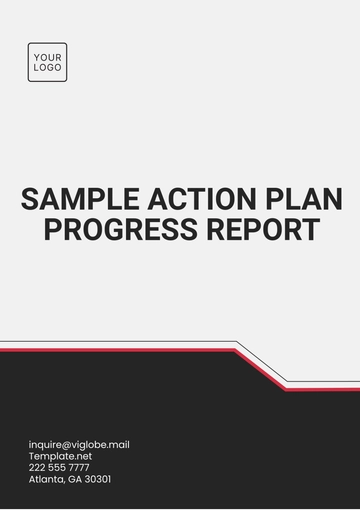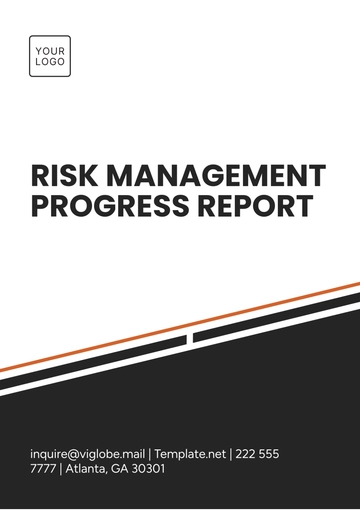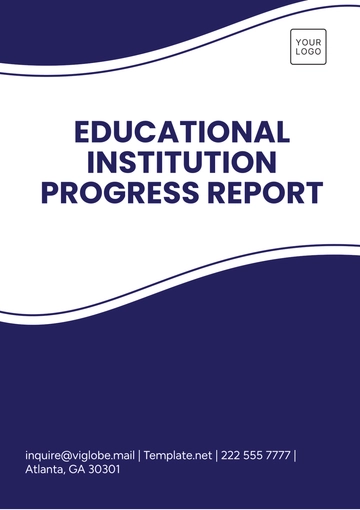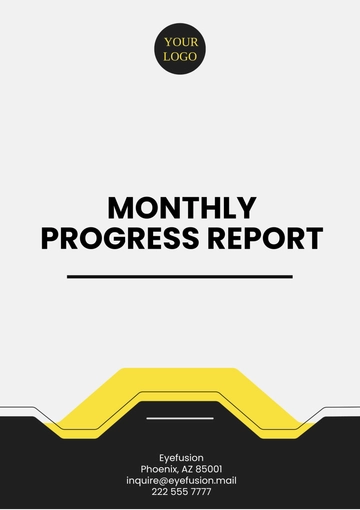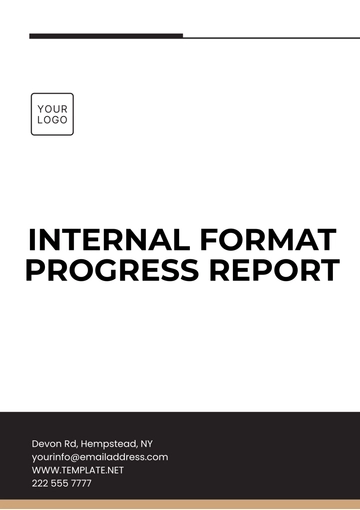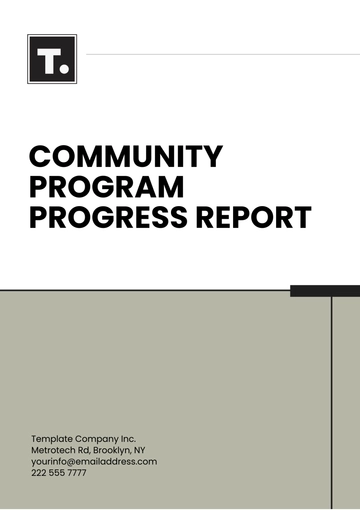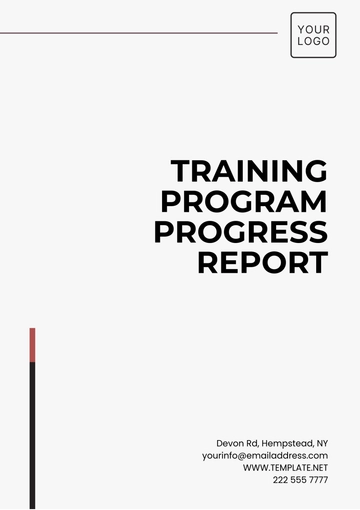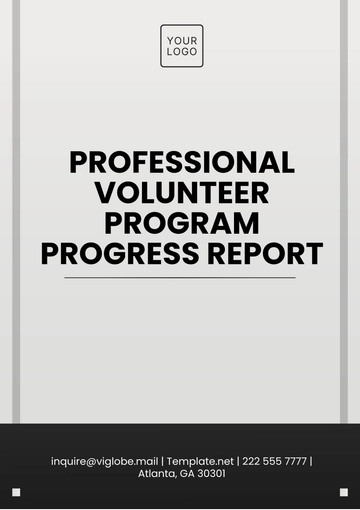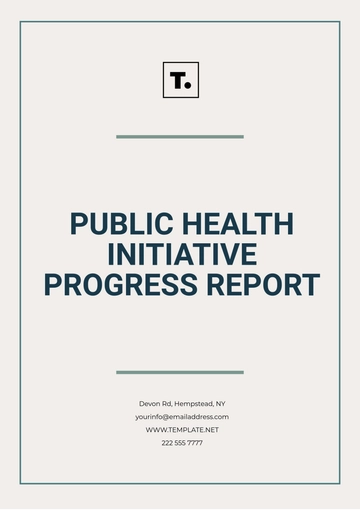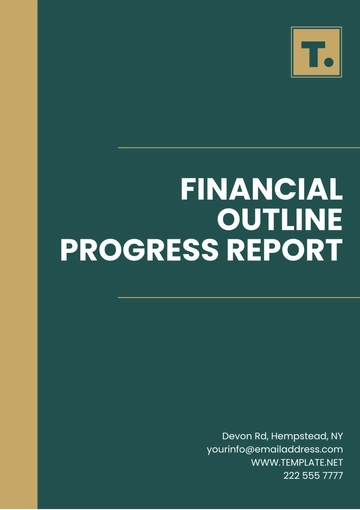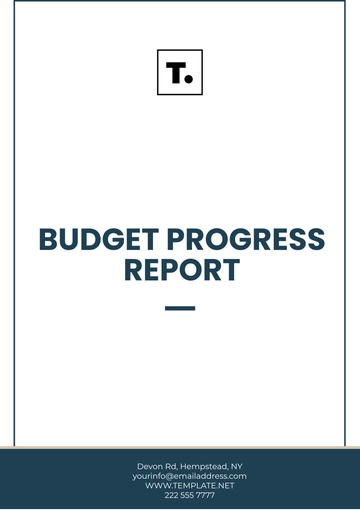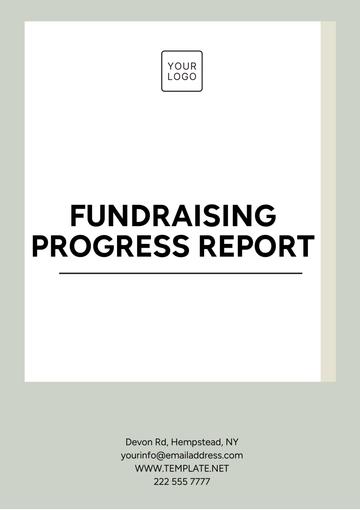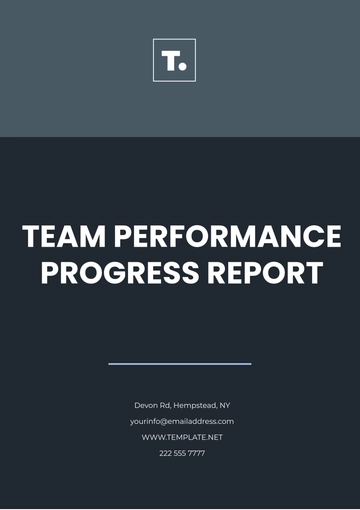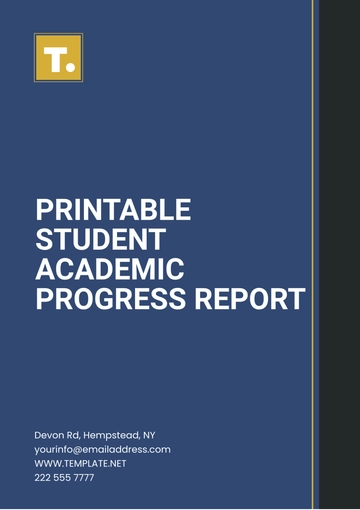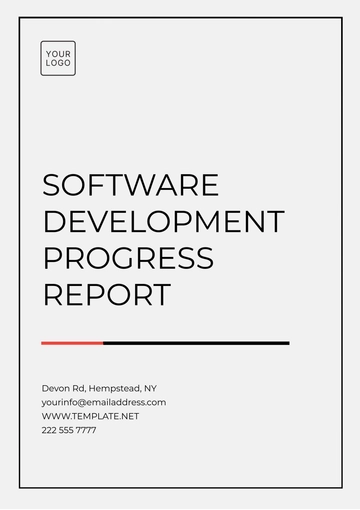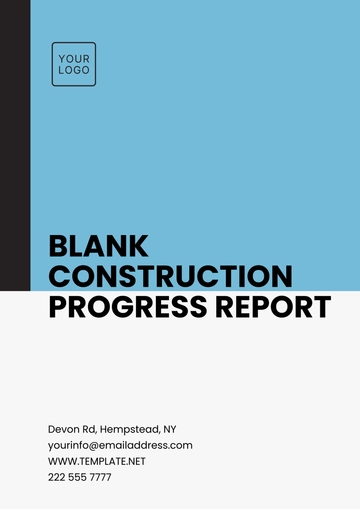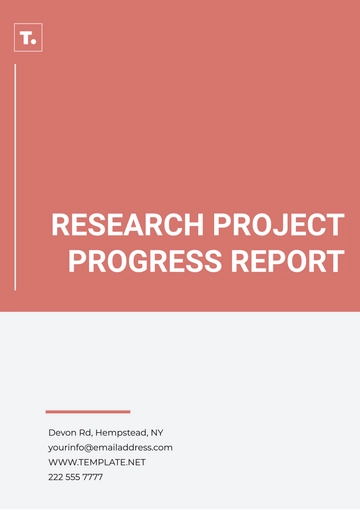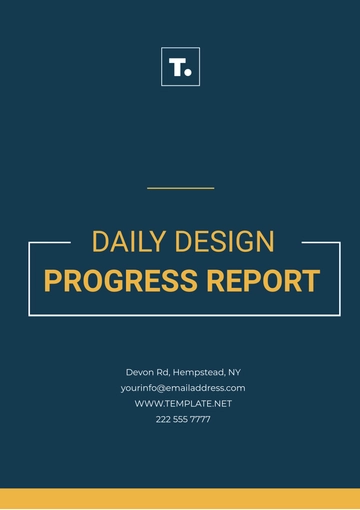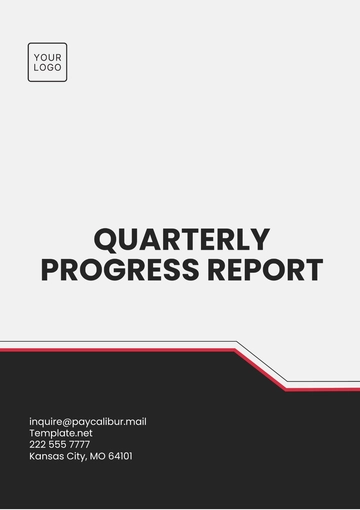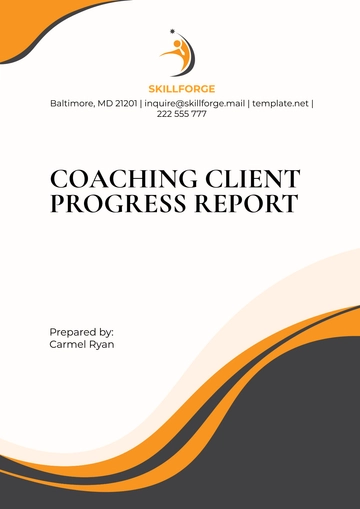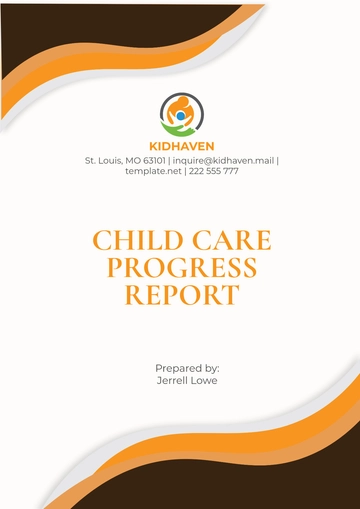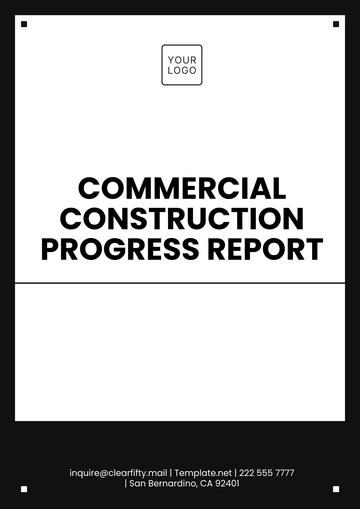Free Real Estate Project Completion and Review Report

I. Introduction
A. Purpose
The purpose of this Real Estate Project Completion and Review Report is to offer a comprehensive analysis and evaluation of the [Project Name], shedding light on its entire lifecycle, from conception to completion. This report serves to inform stakeholders, including investors, regulatory bodies, and project team members, about the project's progress, achievements, challenges faced, and key takeaways for future endeavors in the real estate sector.
B. Scope
This report encapsulates the journey of the [Project Name], situated in the vibrant [City/Area], spanning from [Start Date] to [End Date]. It encompasses a multifaceted examination of the project, delving into its strategic objectives, critical milestones, performance metrics, regulatory compliance, quality assurance measures, stakeholder feedback, and actionable insights for future projects. Furthermore, it provides a holistic view of the project's impact on the local community, environment, and economy.
II. Project Overview
A. Project Name: [Project Name]
B. Project Location: [Location]
C. Project Duration: [Start Date] to [End Date]
D. Project Manager: [Project Manager Name]
E. Stakeholders:
Stakeholder Role | Stakeholder Name |
|---|---|
Client | [Client Name] |
Architect | [Architect Name] |
Contractor | [Contractor Name] |
Regulatory Body | [Regulatory Body Name] |
Financial Advisor | [Advisor Name] |
III. Project Objectives
A. Primary Objectives
Develop [10] residential buildings with modern amenities to meet the housing demands of the growing population in the area. These buildings will offer comfortable and sustainable living spaces, incorporating features such as energy-efficient appliances, green spaces, and community facilities.
Establish a mixed-use commercial complex to stimulate economic growth and enhance the local business environment. The complex will consist of retail outlets, office spaces, and dining establishments, providing diverse opportunities for employment, commerce, and leisure activities.
Adhere to strict timelines, budgetary constraints, and quality standards throughout all phases of the project. This objective ensures efficient project management, cost control, and the delivery of high-quality infrastructure that meets the expectations of stakeholders and regulatory requirements.
B. Secondary Objectives
Attain LEED certification for energy efficiency and environmental sustainability, demonstrating a commitment to eco-friendly construction practices. This objective entails implementing green building initiatives, such as energy-saving technologies, water conservation measures, and waste management strategies, to minimize the project's environmental footprint.
Promote community engagement and social responsibility by actively involving local residents in project planning and development. Initiatives may include hosting community meetings, conducting outreach programs, and supporting local charities or educational institutions. By fostering positive relationships with the community, the project aims to create a sense of ownership and pride among residents.
Ensure effective communication and collaboration among stakeholders, including the project team, clients, subcontractors, and regulatory authorities. This objective involves establishing clear channels of communication, holding regular meetings, and utilizing project management tools to facilitate information sharing, decision-making, and problem-solving. By fostering a collaborative environment, the project seeks to minimize conflicts, resolve issues promptly, and achieve common goals.
IV. Project Milestones
A. Planning Phase
During the planning phase, several key milestones must be achieved to lay the groundwork for successful project execution:
Completion of Feasibility Study: [Date]
Conduct a comprehensive feasibility study to assess the project's viability, including market analysis, financial projections, and risk assessment.
Acquisition of Land and Zoning Approvals: [Date]
Secure the necessary land parcels for development and obtain zoning approvals from local authorities to ensure compliance with land use regulations.
B. Development Phase
The development phase focuses on translating the project concept into actionable plans and designs:
Finalization of Architectural Designs: [Date]
Collaborate with architects, engineers, and design professionals to finalize the architectural plans and blueprints for the residential and commercial buildings.
Commencement of Construction: [Date]
Initiate construction activities, including site preparation, foundation work, and structural construction, in accordance with the approved designs and construction schedule.
Completion of Infrastructure Development: [Date]
Develop essential infrastructure components, such as roads, utilities, and landscaping, to support the residential and commercial developments and enhance the overall accessibility and functionality of the project site.
C. Construction Phase
The construction phase involves the physical realization of the project's vision, requiring meticulous planning and execution:
Completion of Structure Erection: [Date]
Achieve significant progress in the construction process by completing the structural framework of the buildings, including floors, walls, and roofs, as per the construction drawings and specifications.
Installation of Interior Finishing: [Date]
Proceed with interior finishing works, including plumbing, electrical, HVAC, and interior finishes, to transform the structural shell into habitable and functional spaces ready for occupancy.
Passing of Final Inspections: [Date]
Facilitate thorough inspections by regulatory authorities and third-party inspectors to ensure compliance with building codes, safety standards, and quality requirements before obtaining final approvals for occupancy and use.
D. Completion Phase
The completion phase marks the culmination of the project and involves the finalization of all remaining tasks and formalities:
Project Handover to Client: [Date]
Officially hand over the completed project to the client or owner, including all relevant documentation, keys, and warranties, signifying the transfer of ownership and responsibility.
Acceptance by Client and Final Payment: [Date]
Obtain formal acceptance from the client or owner, acknowledging the satisfactory completion of the project deliverables and making the final payment as per the terms of the contract.
V. Project Performance
A. Key Metrics
Total Project Cost: [$20,000,000]
The total cost incurred throughout the project lifecycle, including expenses related to land acquisition, construction materials, labor, permits, and professional fees.
Project Duration: [5years]
The duration of the project from the commencement of construction to the final completion and handover to the client, measured in months or years.
Return on Investment (ROI): [100%]
The percentage return on investment achieved by the project stakeholders, calculated based on the total project cost and the net profit generated from sales or lease agreements.
B. Challenges Faced
Supply Chain Disruptions
Challenges encountered due to disruptions in the supply chain, such as delays in material deliveries, shortages of skilled labor, or unforeseen market fluctuations affecting project timelines and costs.
Regulatory Compliance Complexity
Difficulties navigating complex regulatory requirements and obtaining necessary permits or approvals from local authorities, leading to delays and additional administrative burdens.
Environmental and Sustainability Constraints
Challenges associated with implementing sustainable construction practices and meeting environmental regulations, including waste management, energy efficiency, and green building certifications.
C. Lessons Learned
Early Engagement of Stakeholders
Recognizing the importance of early engagement with stakeholders, including local communities, regulatory bodies, and project team members, to foster collaboration, address concerns, and streamline decision-making processes.
Robust Risk Management Strategies
Emphasizing the need for robust risk management strategies to anticipate and mitigate potential risks and uncertainties, including contingency planning, risk assessments, and proactive communication with stakeholders.
Continuous Improvement and Adaptability
Valuing a culture of continuous improvement and adaptability, wherein lessons learned from past experiences are used to refine project management practices, optimize resource allocation, and enhance overall project performance.
VI. Quality Assurance and Compliance
A. Regulatory Compliance
Building Codes and Standards
Compliance with local building codes, regulations, and industry standards governing structural integrity, fire safety, accessibility, and environmental sustainability to ensure the safety and well-being of occupants.
Permitting and Licensing
Obtaining necessary permits, licenses, and approvals from relevant authorities at each phase of the project, including land use permits, building permits, occupancy permits, and environmental clearances.
B. Quality Control Measures
Inspection and Testing Protocols
Implementing comprehensive inspection and testing protocols throughout the construction process to verify compliance with quality standards and specifications for materials, workmanship, and installation.
Quality Assurance Documentation
Maintaining detailed records of quality assurance activities, including inspection reports, testing results, certifications, and as-built drawings, to demonstrate compliance with contractual requirements and regulatory obligations.
VII. Stakeholder Feedback
A. Client Feedback
[Client Name]
"We are extremely satisfied with the overall execution and quality of the [Project Name]. The project team demonstrated professionalism, responsiveness, and attention to detail throughout the process. The completed residential and commercial units exceeded our expectations, and we look forward to future collaborations."
[Client Name]
"The [Project Name] has significantly contributed to the revitalization of our community, providing much-needed housing options and commercial amenities. We appreciate the project team's efforts in engaging with local stakeholders and addressing community concerns. The project has brought positive economic and social impacts to our neighborhood."
B. Team Feedback
[Project Manager Name]
"Managing the [Project Name] was a challenging yet rewarding experience. The collaboration among team members, subcontractors, and stakeholders was instrumental in overcoming obstacles and achieving project milestones. The lessons learned from this project will undoubtedly inform our approach to future endeavors."
[Lead Architect Name]
"Designing the [Project Name] allowed us to showcase innovative and sustainable architectural solutions. The project's success reflects our commitment to creating environments that enhance the quality of life for residents and users. We are proud to have contributed to the project's vision and its positive impact on the built environment."
VIII. Conclusion
A. Summary of Achievements
Successful Completion of [Project Name]
The [Project Name] was completed on schedule and within budget, achieving the project's primary objectives of delivering high-quality residential and commercial developments.
Stakeholder Satisfaction and Community Impact
Positive feedback from clients, stakeholders, and the local community reflects the project's success in meeting their needs and expectations, while also contributing to economic growth and social well-being.
B. Future Recommendations
Continuous Improvement and Innovation
Emphasize the importance of continuous improvement and innovation in project management practices, technology adoption, and sustainability initiatives to stay ahead of industry trends and meet evolving market demands.
Stakeholder Engagement and Collaboration
Strengthen efforts to foster stakeholder engagement and collaboration at all stages of the project lifecycle, promoting transparency, trust, and mutual understanding to achieve shared goals and long-term success.
- 100% Customizable, free editor
- Access 1 Million+ Templates, photo’s & graphics
- Download or share as a template
- Click and replace photos, graphics, text, backgrounds
- Resize, crop, AI write & more
- Access advanced editor
Ensure thorough project assessment with the Real Estate Project Completion and Review Report Template from Template.net. This editable and customizable report streamlines the review process, detailing project outcomes and key learnings. Tailor it effortlessly using our Ai Editor Tool for personalized analysis. Simplify project evaluations and enhance future endeavors with this comprehensive template.
You may also like
- Sales Report
- Daily Report
- Project Report
- Business Report
- Weekly Report
- Incident Report
- Annual Report
- Report Layout
- Report Design
- Progress Report
- Marketing Report
- Company Report
- Monthly Report
- Audit Report
- Status Report
- School Report
- Reports Hr
- Management Report
- Project Status Report
- Handover Report
- Health And Safety Report
- Restaurant Report
- Construction Report
- Research Report
- Evaluation Report
- Investigation Report
- Employee Report
- Advertising Report
- Weekly Status Report
- Project Management Report
- Finance Report
- Service Report
- Technical Report
- Meeting Report
- Quarterly Report
- Inspection Report
- Medical Report
- Test Report
- Summary Report
- Inventory Report
- Valuation Report
- Operations Report
- Payroll Report
- Training Report
- Job Report
- Case Report
- Performance Report
- Board Report
- Internal Audit Report
- Student Report
- Monthly Management Report
- Small Business Report
- Accident Report
- Call Center Report
- Activity Report
- IT and Software Report
- Internship Report
- Visit Report
- Product Report
- Book Report
- Property Report
- Recruitment Report
- University Report
- Event Report
- SEO Report
- Conference Report
- Narrative Report
- Nursing Home Report
- Preschool Report
- Call Report
- Customer Report
- Employee Incident Report
- Accomplishment Report
- Social Media Report
- Work From Home Report
- Security Report
- Damage Report
- Quality Report
- Internal Report
- Nurse Report
- Real Estate Report
- Hotel Report
- Equipment Report
- Credit Report
- Field Report
- Non Profit Report
- Maintenance Report
- News Report
- Survey Report
- Executive Report
- Law Firm Report
- Advertising Agency Report
- Interior Design Report
- Travel Agency Report
- Stock Report
- Salon Report
- Bug Report
- Workplace Report
- Action Report
- Investor Report
- Cleaning Services Report
- Consulting Report
- Freelancer Report
- Site Visit Report
- Trip Report
- Classroom Observation Report
- Vehicle Report
- Final Report
- Software Report

